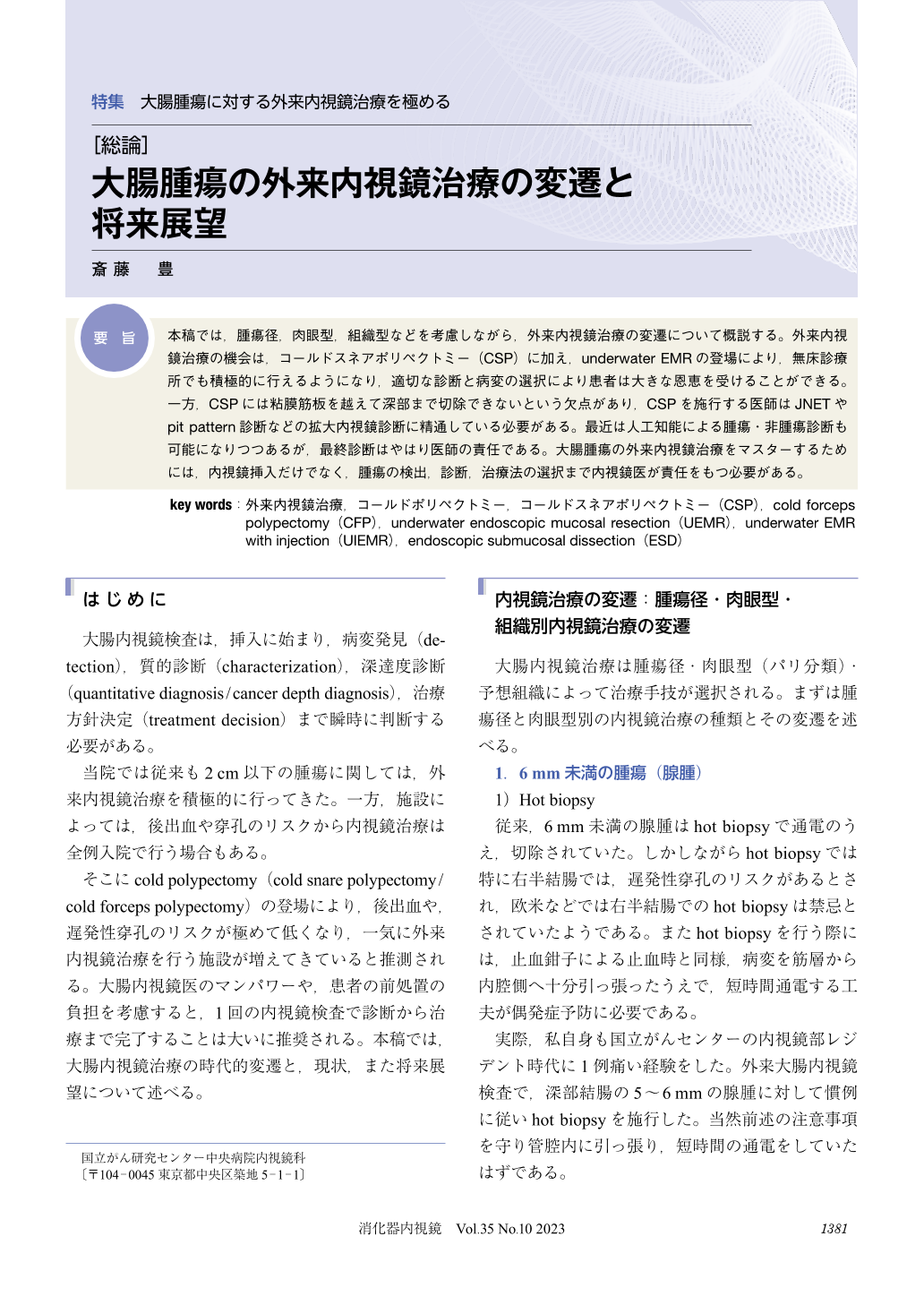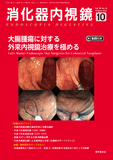Japanese
English
- 有料閲覧
- Abstract 文献概要
- 1ページ目 Look Inside
- 参考文献 Reference
要旨
本稿では,腫瘍径,肉眼型,組織型などを考慮しながら,外来内視鏡治療の変遷について概説する。外来内視鏡治療の機会は,コールドスネアポリペクトミー(CSP)に加え,underwater EMRの登場により,無床診療所でも積極的に行えるようになり,適切な診断と病変の選択により患者は大きな恩恵を受けることができる。一方,CSPには粘膜筋板を越えて深部まで切除できないという欠点があり,CSPを施行する医師はJNETやpit pattern診断などの拡大内視鏡診断に精通している必要がある。最近は人工知能による腫瘍・非腫瘍診断も可能になりつつあるが,最終診断はやはり医師の責任である。大腸腫瘍の外来内視鏡治療をマスターするためには,内視鏡挿入だけでなく,腫瘍の検出,診断,治療法の選択まで内視鏡医が責任をもつ必要がある。
This article reviews the evolution of ambulatory endoscopic treatment over time, taking into account tumor size, macroscopic type, and histology. The opportunities for outpatient endoscopic treatment have been greatly enhanced with the advent of underwater endoscopic mucosal resection (UEMR) in addition to cold snare polypectomy (CSP); the procedure can be actively performed in non-hospital, non-facility clinics, and patients can benefit greatly from appropriate diagnosis and selection of lesions. On the other hand, CSP has the disadvantage of not being able to resect deep enough beyond the muscularis mucosae, and physicians who perform CSP must be familiar with magnified endoscopic diagnostics such as JNET and Pit pattern diagnosis. Although tumor/non-tumor diagnosis by artificial intelligence is becoming possible, the final diagnosis is still the responsibility of the physician. In order to master outpatient endoscopic treatment of colorectal tumors, the endoscopist is responsible not only for endoscopic insertion but also for tumor detection, diagnosis, and treatment selection.

© tokyo-igakusha.co.jp. All right reserved.


